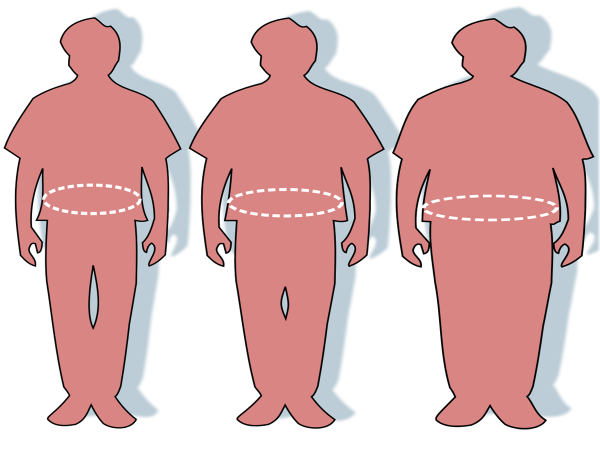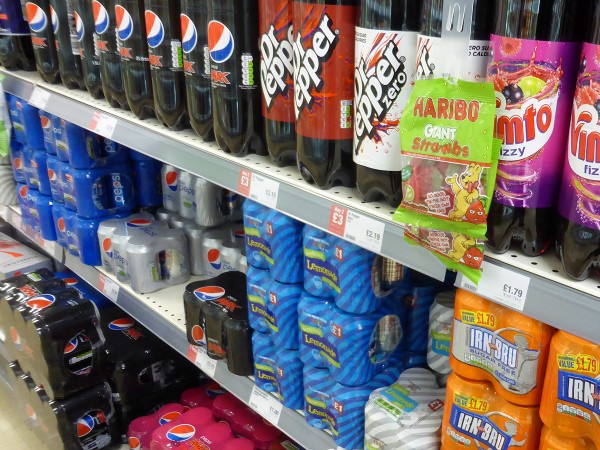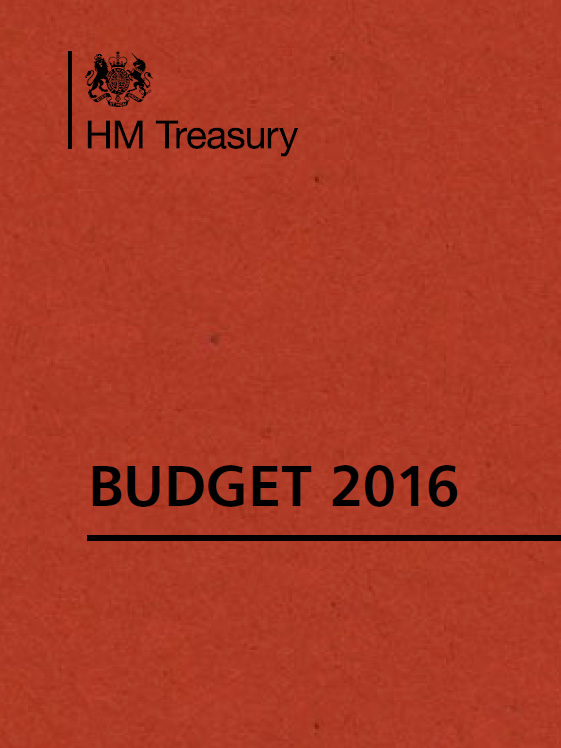 A number of famous Business Schools in the UK and US such as MIT Sloan, NYU Stern and Imperial College have launched new programmes in business analytics. These courses have been nicknamed ‘Big Data finishing school’. Why might qualifications in this area be highly valued by firms?
A number of famous Business Schools in the UK and US such as MIT Sloan, NYU Stern and Imperial College have launched new programmes in business analytics. These courses have been nicknamed ‘Big Data finishing school’. Why might qualifications in this area be highly valued by firms?
Employees who have the skills to collect and process Big Data might help firms to successfully implement a pricing strategy that approaches first-degree price discrimination.
First-degree price discrimination is where the seller of a product is able to charge each consumer the maximum price he or she is prepared to pay for each unit of the product. Successfully implementing this type of pricing strategy could enable a firm to make more revenue. It might also lead to an increase in economic efficiency. However, the strategy might be opposed on equity grounds.
In reality, perfect price discrimination is more of a theoretical benchmark than a viable pricing strategy. Discovering the maximum amount each of its customers is willing to pay is an impossible task for a firm.
It may be possible for some sellers to implement a person-specific pricing strategy that approaches first-degree price discrimination. Firms may not be able to charge each customer the maximum amount they are willing to pay but they may be able to charge different prices that reflect customers’ different valuations of the product.
 How could a firm go about predicting how much each of its customers is willing to pay? Traditionally smaller sellers might try to ‘size up’ a customer through individual observation and negotiation. The clothes people wear, the cars they drive and their ethnicity/nationality might indicate something about their income. Second-hand car dealers and stall-holders often haggle with customers in an attempt to personalise pricing. The starting point of these negotiations will often be influenced by the visual observations made by the seller.
How could a firm go about predicting how much each of its customers is willing to pay? Traditionally smaller sellers might try to ‘size up’ a customer through individual observation and negotiation. The clothes people wear, the cars they drive and their ethnicity/nationality might indicate something about their income. Second-hand car dealers and stall-holders often haggle with customers in an attempt to personalise pricing. The starting point of these negotiations will often be influenced by the visual observations made by the seller.
The problem with this approach is that observation and negotiation is a time-consuming process. The extra costs involved might be greater than the extra revenue generated. This might be especially true for firms that sell a large volume of products. Just imagine how long it would take to shop at a supermarket if each customer had to haggle with a member of staff over each item in their supermarket trolley!! There is also the problem of designing compensation contracts for sales staff that provide appropriate incentives.
However the rise of e-commerce may lead to a very different trading environment. Whenever people use their smart phones, laptops and tablets to purchase goods, they are providing huge amounts of information (perhaps unconsciously) to the seller. This is known as Big Data. If this information can be effectively collected and processed then it could be used by the seller to predict different customers’ willingness to pay.
Some of this Big Data provides information similar to that observed by sellers in traditional off-line transactions. However, instead of visual clues observed by a salesperson, the firm is able to collect and process far greater quantities of information from the devices that people use.
For example, the Internet Protocol (IP) address could be used to identify the geographical location of the customer: i.e. do they live in a relatively affluent or socially deprived area? The operating system and browser might also indicate something about a buyer’s income and willingness to pay. The travel website, Orbitz, found that Apple users were 40 per cent more likely to book four or five star hotel rooms than customers who used Windows.
Perhaps the most controversial element to Big Data is the large amount of individual-level information that exists about the behaviour of customers. In particular, browsing histories can be used to find out (a) what types of goods people have viewed (b) how long they typically spend on-line and (c) their previous purchase history. This behavioural information might accurately predict price sensitivity and was never available in off-line transactions.
Interestingly, there has been very little evidence to date that firms are implementing personalised pricing on the internet. One possible explanation is that effective techniques to process the mass of available information have not been fully developed. This would help to explain the growth in business analytics courses offered by universities. PricewaterhouseCoopers recently announced its aim to recruit one thousand more data scientists over the next two years.
Another possible explanation is that firms fear a backlash from customers who are deeply opposed to this type of pricing. In a widely cited survey of consumers, 91% of the respondents believed that first-degree price discrimination was unfair.
Articles
Big data is coming for your purchase history – to charge you more money The Guardian, Anna Bernasek and DT Mongan (29/5/15)
Big data is an economic justice issue, not just a Privacy Problem The Huffington Post, Nathan Newman (16/5/15)
MIT’s $75,000 Big Data finishing school (and its many rivals) Financial Times, Adam Jones (20/3/16)
The Government’s consumer data watchdog New York Times, Natasha Singer (23/5/2015)
The economics of big data and differential pricing The Whitehouse blog, Jason Furman, Tim Simcoe (6/2/2015)
Questions
- Explain the difference between first- and third-degree price discrimination.
- Using an appropriate diagram, explain why perfect price discrimination might result in an economically more efficient outcome than uniform pricing.
- Draw a diagram to illustrate how a policy of first-degree price discrimination could lead to greater revenue but lower profits for a firm.
- Why would it be so difficult for a firm to discover the maximum amount each of its customers was willing to pay?
- Explain how the large amount of information on the individual behaviour of customers (so-called Big Data) could be used to predict differences in their willingness to pay.
- What factors might prevent a firm from successfully implementing a policy of personalised pricing?
 In many cases, we simply leave the market to do what it does best – equate demand with supply and from this we get an equilibrium price and the optimal quantity. But, what happens if either the price or quantity is ‘incorrect’? What happens if the market fails to deliver an efficient outcome? In this case, we look to governments to intervene and ‘correct’ the market and such intervention can take place on the demand and/or supply-side. One area where it is generally felt that government intervention is needed is drugs and the trafficking of them across borders.
In many cases, we simply leave the market to do what it does best – equate demand with supply and from this we get an equilibrium price and the optimal quantity. But, what happens if either the price or quantity is ‘incorrect’? What happens if the market fails to deliver an efficient outcome? In this case, we look to governments to intervene and ‘correct’ the market and such intervention can take place on the demand and/or supply-side. One area where it is generally felt that government intervention is needed is drugs and the trafficking of them across borders.
There are many ways in which governments have tried to tackle the problem of drug usage. The issue is that drugs are bad for individuals, for the community, society and the economy. Too much is produced and consumed and hence we have a classic case of market failure and this justifies government intervention.
But, how should governments intervene? With a substance such as drugs, we have an inelastic demand with resepect to price – any increase in price leads to only a small decrease in quantity. So any policy implemented by governments that attempts to change the market price will have limited effect in restricting demand. With globalisation, drugs can be moved more easily across borders and hence global co-operation is needed to restrict the flow. The article below considers the area of drugs and drug trafficking and looks at some of the policy options open to government.
Narconomics: The business of drug trafficking Houston Chronicle (16/3/16)
Questions
- Why does the market fail in the case of drug trafficking?
- Draw the demand curve you would expect for drugs and use this to explain why an increase in price will have limited effect on demand.
- Is there an argument for making drugs legal as a means of raising tax revenue?
- If better educational programmes are introduced about the perils of drug usage, how would this affect the market? Use a demand and supply diagram to help explain your answer.
- Why does globalisation make the solutions to drug trafficking more difficult to implement?
- Could drug usage and drug trafficking and hence the need to invest more money in tackling the problem actually boost an economy’s rate of growth? If so, does this mean that we should encourage drug usage?
 Back in October, we looked at the growing pressure in the UK for a sugar tax. The issue of childhood obesity was considered by the Parliamentary Health Select Committee and a sugar tax, either on sugar generally, or specifically on soft drinks, was one of the proposals being considered to tackle the problem. The committee studied a report by Public Health England, which stated that:
Back in October, we looked at the growing pressure in the UK for a sugar tax. The issue of childhood obesity was considered by the Parliamentary Health Select Committee and a sugar tax, either on sugar generally, or specifically on soft drinks, was one of the proposals being considered to tackle the problem. The committee studied a report by Public Health England, which stated that:
Research studies and impact data from countries that have already taken action suggest that price increases, such as by taxation, can influence purchasing of sugar sweetened drinks and other high sugar products at least in the short-term with the effect being larger at higher levels of taxation.
In his Budget on 16 March, the Chancellor announced that a tax would be imposed on manufacturers of soft drinks from April 2018. This will be at a rate of 18p per litre on drinks containing between 5g and 8g of sugar per 100ml, such as Dr Pepper, Fanta and Sprite, and 24p per litre for drinks with more than 8g per 100ml, such as Coca-Cola, Pepsi and Red Bull.
 Whilst the tax has been welcomed by health campaigners, there are various questions about (a) how effective it is likely to be in reducing childhood obesity; (b) whether it will be enough or whether other measures will be needed; and (c) whether it is likely to raise the £520m in 2018/19, falling to £455m by 2020/21, as predicted by the Treasury: money the government will use for promoting school sport and breakfast clubs.
Whilst the tax has been welcomed by health campaigners, there are various questions about (a) how effective it is likely to be in reducing childhood obesity; (b) whether it will be enough or whether other measures will be needed; and (c) whether it is likely to raise the £520m in 2018/19, falling to £455m by 2020/21, as predicted by the Treasury: money the government will use for promoting school sport and breakfast clubs.
These questions are all linked. If demand for such drinks is relatively inelastic, the drinks manufacturers will find it easier to pass the tax on to consumers and the government will raise more revenue. However, it will be less effective in cutting sugar consumption and hence in tackling obesity. In other words, there is a trade off between raising revenue and cutting consumption.
 This incidence of tax is not easy to predict. Part of the reason is that much of the market is a bilateral oligopoly, with giant drinks manufacturers selling to giant supermarket chains. In such circumstances, the degree to which the tax can be passed on depends on the bargaining strength and skill of both sides. Will the supermarkets be able to put pressure on the manufacturers to absorb the tax themselves and not pass it on in the wholesale price? Or will the demand be such, especially for major brands such as Coca-Cola, that the supermarkets will be willing to accept a higher price from the manufacturers and then pass it on to the consumer?
This incidence of tax is not easy to predict. Part of the reason is that much of the market is a bilateral oligopoly, with giant drinks manufacturers selling to giant supermarket chains. In such circumstances, the degree to which the tax can be passed on depends on the bargaining strength and skill of both sides. Will the supermarkets be able to put pressure on the manufacturers to absorb the tax themselves and not pass it on in the wholesale price? Or will the demand be such, especially for major brands such as Coca-Cola, that the supermarkets will be willing to accept a higher price from the manufacturers and then pass it on to the consumer?
Then there is the question of the response of the manufacturers. How easy will it be for them to reformulate their drinks to reduce sugar content and yet still retain sales? For example, can they produce a product which tastes like a high sugar drink,  but really contains a mix between sugar and artificial sweeteners – effectively a hybrid between a ‘normal’ and a low-cal version? How likely are they to reduce the size of cans, say from 330ml to 300ml, to avoid raising prices?
but really contains a mix between sugar and artificial sweeteners – effectively a hybrid between a ‘normal’ and a low-cal version? How likely are they to reduce the size of cans, say from 330ml to 300ml, to avoid raising prices?
The success of the tax on soft drinks in cutting sugar consumption depends on whether it is backed up by other policies. The most obvious of these would be to impose a tax on sugar in other products, including cakes, biscuits, low-fat yoghurts, breakfast cereals and desserts, and also many savoury products, such as tinned soups, ready meals and sauces. But there are other policies too. The Public Health England report recommended a national programme to educate people on sugar in foods; reducing price promotions of sugary food and drink; removing confectionery or other sugary foods from end of aisles and till points in supermarkets; setting broader and deeper controls on advertising of high-sugar foods and drinks to children; and reducing the sugar content of the foods we buy through reformulation and portion size reduction.
Articles
- Sugar tax: How it will work?
BBC News, Nick Triggle (16/3/16)
- Will a sugar tax actually work?
The Guardian, Alberto Nardelli and George Arnett (16/3/16)
- Coca-Cola and other soft drinks firms hit back at sugar tax plan
The Guardian, Sarah Butler (17/3/16)
- Sugar tax could increase calories people consume, economic experts warn
The Telegraph, Kate McCann, and Steven Swinford (17/3/16)
- Nudge, nudge! How the sugar tax will help British diets
Financial Times, Anita Charlesworth (18/3/16)
- Is the sugar tax an example of the nanny state going too far?
Financial Times (19/3/16)
- Government’s £520m sugar tax target ‘highly dubious’, analysts warn
The Telegraph, Ben Martin (17/3/16)
- Sorry Jamie Oliver, I’d be surprised if sugar tax helped cut obesity
The Conversation, Isabelle Szmigin (17/3/16)
- Sugar sweetened beverage taxes
What Works for Health (17/12/15)
Questions
- What determines the price elasticity of demand for sugary drinks in general (as opposed to one particular brand)?
- How are drinks manufacturers likely to respond to the sugar tax?
- How are price elasticity of demand and supply relevant in determining the incidence of the sugar tax between manufacturers and consumers? How is the degree of competition in the market relevant here?
- What is meant by a socially optimal allocation of resources?
- If the current consumption of sugary drinks is not socially optimal, what categories of market failure are responsible for this?
- Will a sugar tax fully tackle these market failures? Explain.
- Is a sugar tax progressive, regressive or proportional? Explain.
- Assess the argument that the tax on sugar in soft drinks may actually increase the amount that people consume.
- The sugar tax can be described as a ‘hypothecated tax’. What does this mean and is it a good idea?
- Compare the advantages and disadvantages of a tax on sugar in soft drinks with (a) banning soft drinks with more than a certain amount of sugar per 100ml; (b) a tax on sugar; (c) a tax on sugar in all foods and drinks.
 During the 1970s, commentators often referred to the ‘political business cycle’. As William Nordhaus stated in a 1989 paper. “The theory of the political business cycle, which analyzes the interaction of political and economic systems, arose from the obvious facts of life that voters care about the economy while politicians care about power.”
During the 1970s, commentators often referred to the ‘political business cycle’. As William Nordhaus stated in a 1989 paper. “The theory of the political business cycle, which analyzes the interaction of political and economic systems, arose from the obvious facts of life that voters care about the economy while politicians care about power.”
In the past, politicians would use fiscal, and sometimes monetary, policies to manipulate aggregate demand so that the economy was growing strongly at the time of the next election. This often meant doing unpopular things in the first couple of years of office to allow for popular things, such as tax cuts and increased government transfers, as the next election approached. This tended to align the business cycle with the election cycle. The economy would slow in the early years of a parliament and expand rapidly towards the end.
To some extent, this has been the approach since 2010 of first the Coalition and now the Conservative governments. Cuts to government expenditure were made ‘in order to clear up the mess left by the previous government’. At the time it was hoped that, by the next election, the economy would be growing strongly again.
 But in adopting a fiscal mandate, the current government could be doing the reverse of previous governments. George Osborne has set the target of a budget surplus by the final year of this parliament (2019–20) and has staked his reputation on achieving it.
But in adopting a fiscal mandate, the current government could be doing the reverse of previous governments. George Osborne has set the target of a budget surplus by the final year of this parliament (2019–20) and has staked his reputation on achieving it.
The problem, as we saw in the blog, Hitting – or missing – the government’s self-imposed fiscal targets is that growth in the economy has slowed and this makes it more difficult to achieve the target of a budget surplus by 2019–20. Given that achieving this target is seen to be more important for his reputation for ‘sound management’ of the public finances than that the economy should be rapidly growing, it is likely that the Chancellor will be dampening aggregate demand in the run-up to the next election. Indeed, in the latest Budget, he announced that specific measures would be taken in 2019–20 to meet the target, including a further £3.5 billion of savings from departmental spending in 2019–20. In the meantime, however, taxes would be cut (such as increasing personal allowances and cutting business rates) and government spending in certain areas would be increased. As the OBR states:
Despite a weaker outlook for the economy and tax revenues, the Chancellor has announced a net tax cut and new spending commitments. But he remains on course for a £10 billion surplus in 2019–20, by rescheduling capital investment, promising other cuts in public services spending and shifting a one-off boost to corporation tax receipts into that year.
But many commentators have doubted that this will be enough to bring a surplus. Indeed Paul Johnson, Director of the Institute for Fiscal Studies, stated on BBC Radio 4’s Today Programme said that “there’s only about a 50:50 shot that he’s going to get there. If things change again, if the OBR downgrades its forecasts again, I don’t think he will be able to get away with anything like this. I think he will be forced to put some proper tax increases in or possibly find yet further proper spending cuts”.
If that is the case, he will be further dampening the economy as the next election approaches. In other words, the government may be doing the reverse of what governments did in the past. Instead of boosting the economy to increase growth at election time, the government may feel forced to make further cuts in government expenditure and/or to raise taxes to meet the fiscal target of a budget surplus.
Articles
Budget 2016: George Osborne hits back at deficit critics BBC News (17/3/16)
George Osborne will have to break his own rules to win the next election Business Insider, Ben Moshinsky (17/3/16)
Osborne Accused of Accounting Tricks to Meet Budget Surplus Goal Bloomberg, Svenja O’Donnell and Robert Hutton (16/3/16)
George Osborne warns more cuts may be needed to hit surplus target Financial Times, Jim Pickard (17/3/16)
6 charts that explain why George Osborne is about to make austerity even worse Independent, Hazel Sheffield (16/3/16)
Budget 2016: Osborne ‘has only 50-50 chance’ of hitting surplus target The Guardian, Heather Stewart and Larry Elliott (17/3/16)
How will Chancellor George Osborne reach his surplus? BBC News, Howard Mustoe (16/3/16)
Osborne’s fiscal illusion exposed as a house of credit cards The Guardian, Larry Elliott (17/3/16)
The Budget’s bottom line: taxes will rise and rise again The Telegraph, Allister Heath (17/3/16)
Reports, analysis and documents
Economic and fiscal outlook – March 2016 Office for Budget Responsibility (16/3/16)
Budget 2016: documents HM Treasury (16/3/16)
Budget 2016 Institute for Fiscal Studies (17/3/16)
Questions
- Explain the fiscal mandate of the Conservative government.
- Does sticking to targets for public-sector deficits and debt necessarily involve dampening aggregate demand as an election approaches? Explain.
- For what reasons may the Chancellor not hit his target of a public-sector surplus by 2019–20?
- Compare the advantages and disadvantages of a rules-based fiscal policy and one based on discretion.
 It doesn’t seem long ago that we were looking at the prospects of Brazil for hosting the Football World Cup. Now, we turn to the same economy, but this time for the Olympics. It is often the case that hosting big global sporting events can give a boost to the host nation, but is Brazil prepared for it? Did the World Cup bring the expected economic boosts? Some argue that the Olympics is just what Brazil needs, but others suggest it will only worsen the economic situation in the world’s seventh largest economy.
It doesn’t seem long ago that we were looking at the prospects of Brazil for hosting the Football World Cup. Now, we turn to the same economy, but this time for the Olympics. It is often the case that hosting big global sporting events can give a boost to the host nation, but is Brazil prepared for it? Did the World Cup bring the expected economic boosts? Some argue that the Olympics is just what Brazil needs, but others suggest it will only worsen the economic situation in the world’s seventh largest economy.
Brazil’s economic performance in the past year was not good. In fact, it was one of the worst performing nations of any major economy, with GDP falling by 3%. This is a very different country from the one that was awarded this biggest of sporting events. Despite these difficult times, Brazil’s government maintains that the country is ready and that the games will be ‘spectacular’.
Key to hosting a sporting event such as the Olympics is the infrastructure investment and as a key component of aggregate demand, this should be a stimulant for growth and job creation. However, with the economy still struggling, many are concerned that the infrastructure won’t be in place in time.
Other benefits from this should be the boost to growth driven by athletes and spectators coming from around the globe, buying tickets, memorabilia, accommodation, food and other items that tourists tend to buy. A multiplier effect should be seen and according to research has the potential to create significant benefits for the whole economy and not just the local regions where events take place. You can look at similar analysis in blogs written about Tokyo: 2020 Tokyo Olympics and London: The London Olympics legacy: a cost–benefit analysis and Does hosting the Olympics Games increase economic growth?
But, is this really likely to happen, especially given the somewhat lacklustre boost that the Brazil World Cup gave to the economy? The following articles consider this.
Rio 2016: Can Games bounce back from Brazil economic woes? BBC News, Bill Wilson (11/03/16)
Does hosting the Olympics actually pay off? It’s the economy, Binyamin Applebaum (5/08/14)
Rio Olympics no help to Brazil economy based on World Cup Bloomberg, Raymond Colitt (16/01/15)
The economic impact of Brazil’s 2014 World Cup and 2016 Olympics Saxo Group, Trading Floor, Sverrir Sverrisson (27/08/12)
Special Interview: Cost–benefit analysis of hosting the World Cup, Olympics Al Arabiya, Ricardo Guerra (3/7/14)
Questions
- How might you carry out a cost–benefit analysis to decide whether to host a big sporting event?
- Are there any externalities that might result from hosting the Olympics? How easy is it to estimate their monetary value? Should this be taken into account by a country when making a decision?
- Why might there be a boost to aggregate demand prior to the Olympics?
- Why might there be a multiplier effect when a nation hosts the Olympics or another sporting event?
- Might there be benefits to Brazil’s neighbours from its hosting the Olympics?
 A number of famous Business Schools in the UK and US such as MIT Sloan, NYU Stern and Imperial College have launched new programmes in business analytics. These courses have been nicknamed ‘Big Data finishing school’. Why might qualifications in this area be highly valued by firms?
A number of famous Business Schools in the UK and US such as MIT Sloan, NYU Stern and Imperial College have launched new programmes in business analytics. These courses have been nicknamed ‘Big Data finishing school’. Why might qualifications in this area be highly valued by firms?  How could a firm go about predicting how much each of its customers is willing to pay? Traditionally smaller sellers might try to ‘size up’ a customer through individual observation and negotiation. The clothes people wear, the cars they drive and their ethnicity/nationality might indicate something about their income. Second-hand car dealers and stall-holders often haggle with customers in an attempt to personalise pricing. The starting point of these negotiations will often be influenced by the visual observations made by the seller.
How could a firm go about predicting how much each of its customers is willing to pay? Traditionally smaller sellers might try to ‘size up’ a customer through individual observation and negotiation. The clothes people wear, the cars they drive and their ethnicity/nationality might indicate something about their income. Second-hand car dealers and stall-holders often haggle with customers in an attempt to personalise pricing. The starting point of these negotiations will often be influenced by the visual observations made by the seller.










